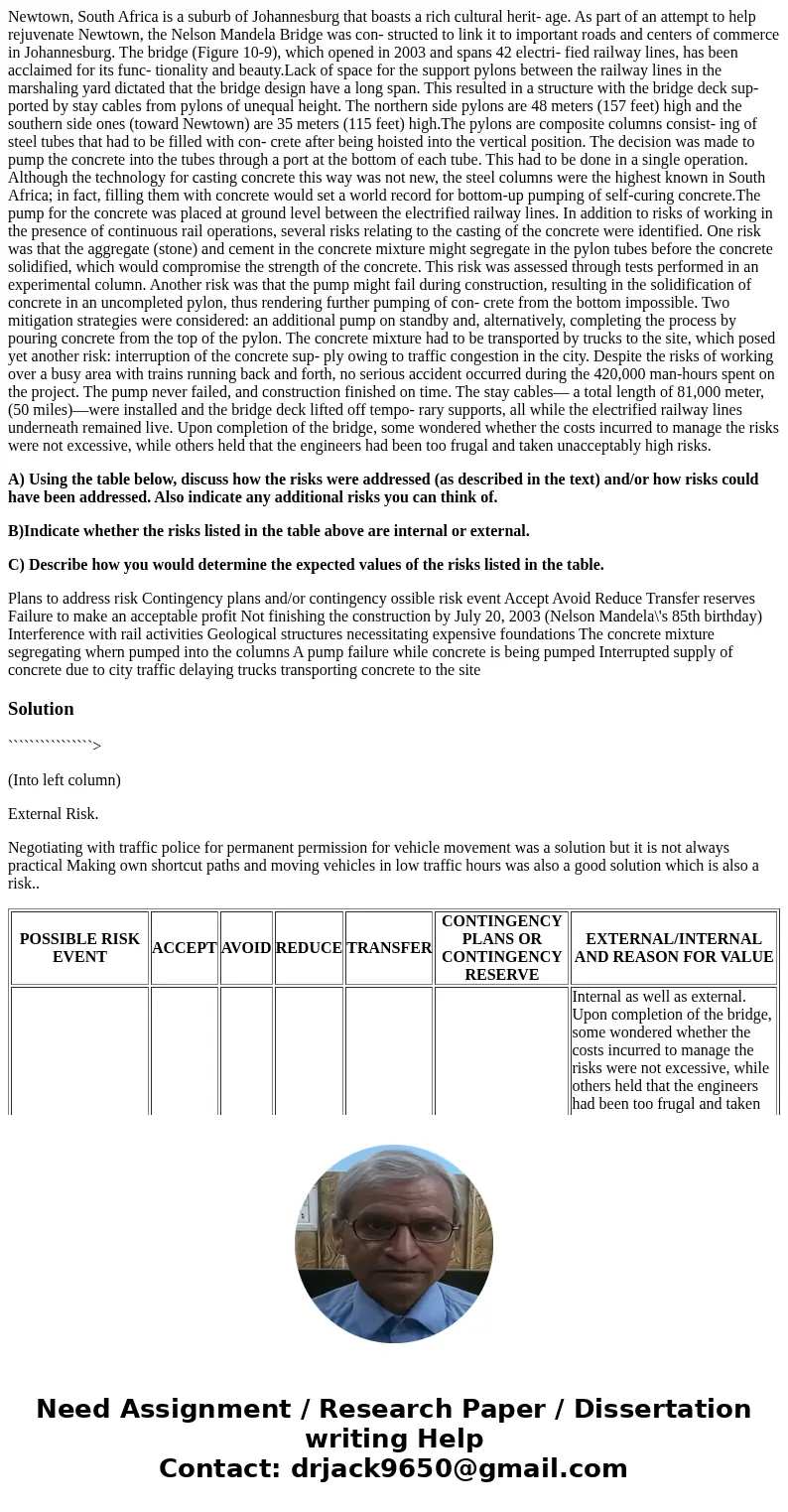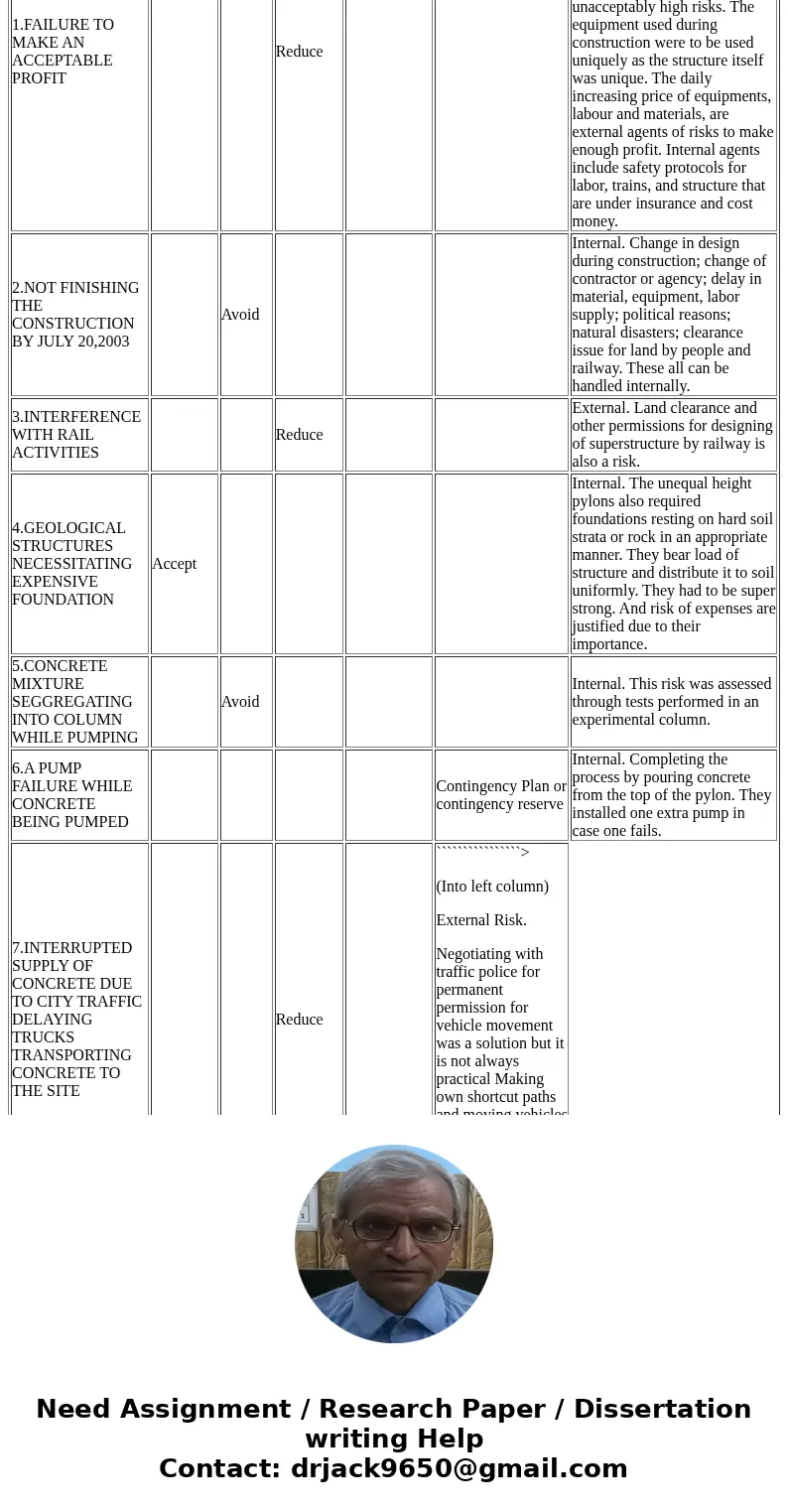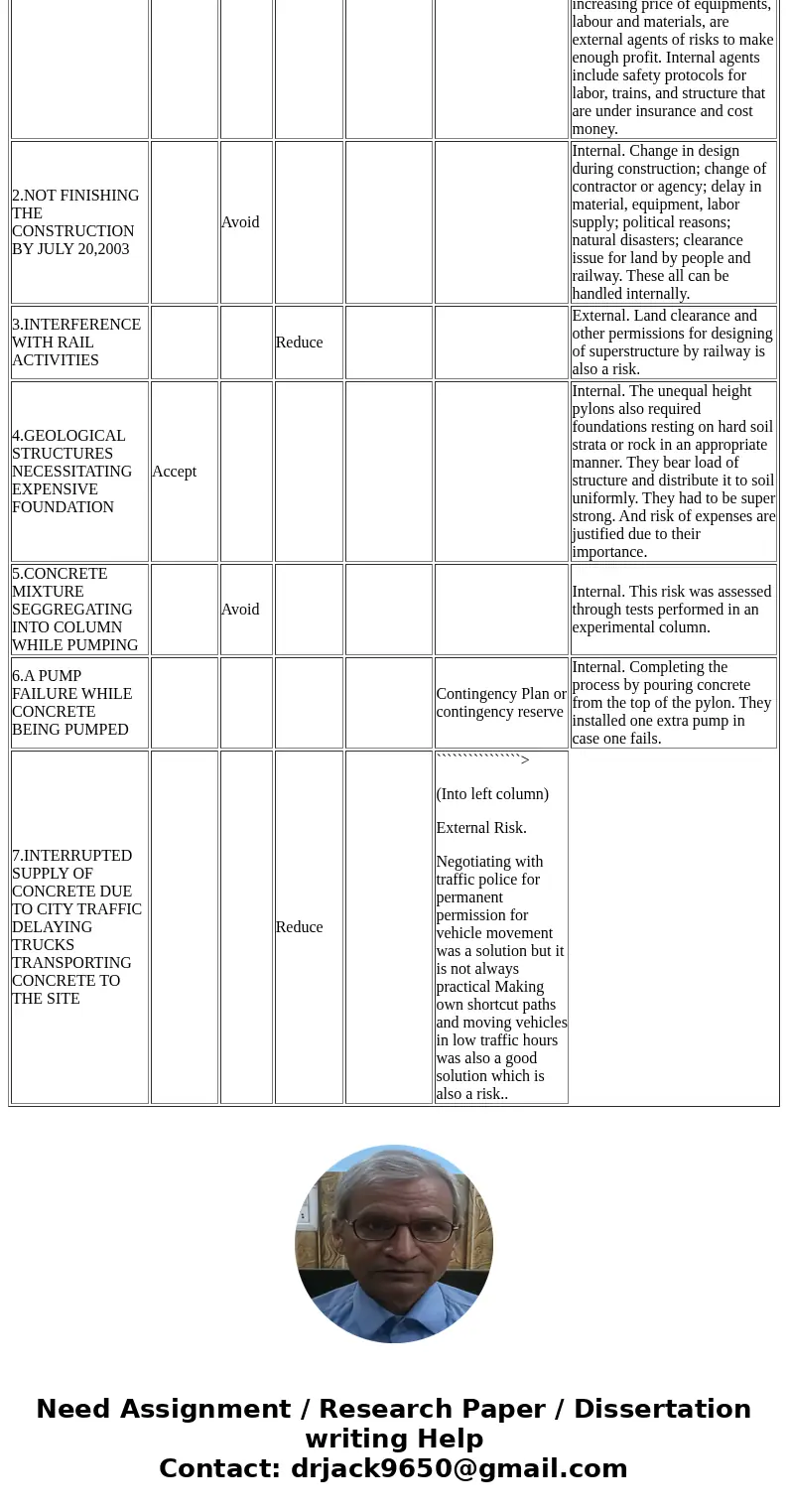Newtown South Africa is a suburb of Johannesburg that boasts
Newtown, South Africa is a suburb of Johannesburg that boasts a rich cultural herit- age. As part of an attempt to help rejuvenate Newtown, the Nelson Mandela Bridge was con- structed to link it to important roads and centers of commerce in Johannesburg. The bridge (Figure 10-9), which opened in 2003 and spans 42 electri- fied railway lines, has been acclaimed for its func- tionality and beauty.Lack of space for the support pylons between the railway lines in the marshaling yard dictated that the bridge design have a long span. This resulted in a structure with the bridge deck sup- ported by stay cables from pylons of unequal height. The northern side pylons are 48 meters (157 feet) high and the southern side ones (toward Newtown) are 35 meters (115 feet) high.The pylons are composite columns consist- ing of steel tubes that had to be filled with con- crete after being hoisted into the vertical position. The decision was made to pump the concrete into the tubes through a port at the bottom of each tube. This had to be done in a single operation. Although the technology for casting concrete this way was not new, the steel columns were the highest known in South Africa; in fact, filling them with concrete would set a world record for bottom-up pumping of self-curing concrete.The pump for the concrete was placed at ground level between the electrified railway lines. In addition to risks of working in the presence of continuous rail operations, several risks relating to the casting of the concrete were identified. One risk was that the aggregate (stone) and cement in the concrete mixture might segregate in the pylon tubes before the concrete solidified, which would compromise the strength of the concrete. This risk was assessed through tests performed in an experimental column. Another risk was that the pump might fail during construction, resulting in the solidification of concrete in an uncompleted pylon, thus rendering further pumping of con- crete from the bottom impossible. Two mitigation strategies were considered: an additional pump on standby and, alternatively, completing the process by pouring concrete from the top of the pylon. The concrete mixture had to be transported by trucks to the site, which posed yet another risk: interruption of the concrete sup- ply owing to traffic congestion in the city. Despite the risks of working over a busy area with trains running back and forth, no serious accident occurred during the 420,000 man-hours spent on the project. The pump never failed, and construction finished on time. The stay cables— a total length of 81,000 meter, (50 miles)—were installed and the bridge deck lifted off tempo- rary supports, all while the electrified railway lines underneath remained live. Upon completion of the bridge, some wondered whether the costs incurred to manage the risks were not excessive, while others held that the engineers had been too frugal and taken unacceptably high risks.
A) Using the table below, discuss how the risks were addressed (as described in the text) and/or how risks could have been addressed. Also indicate any additional risks you can think of.
B)Indicate whether the risks listed in the table above are internal or external.
C) Describe how you would determine the expected values of the risks listed in the table.
Plans to address risk Contingency plans and/or contingency ossible risk event Accept Avoid Reduce Transfer reserves Failure to make an acceptable profit Not finishing the construction by July 20, 2003 (Nelson Mandela\'s 85th birthday) Interference with rail activities Geological structures necessitating expensive foundations The concrete mixture segregating whern pumped into the columns A pump failure while concrete is being pumped Interrupted supply of concrete due to city traffic delaying trucks transporting concrete to the siteSolution
````````````````>
(Into left column)
External Risk.
Negotiating with traffic police for permanent permission for vehicle movement was a solution but it is not always practical Making own shortcut paths and moving vehicles in low traffic hours was also a good solution which is also a risk..
| POSSIBLE RISK EVENT | ACCEPT | AVOID | REDUCE | TRANSFER | CONTINGENCY PLANS OR CONTINGENCY RESERVE | EXTERNAL/INTERNAL AND REASON FOR VALUE |
|---|---|---|---|---|---|---|
| 1.FAILURE TO MAKE AN ACCEPTABLE PROFIT | Reduce | Internal as well as external. Upon completion of the bridge, some wondered whether the costs incurred to manage the risks were not excessive, while others held that the engineers had been too frugal and taken unacceptably high risks. The equipment used during construction were to be used uniquely as the structure itself was unique. The daily increasing price of equipments, labour and materials, are external agents of risks to make enough profit. Internal agents include safety protocols for labor, trains, and structure that are under insurance and cost money. | ||||
| 2.NOT FINISHING THE CONSTRUCTION BY JULY 20,2003 | Avoid | Internal. Change in design during construction; change of contractor or agency; delay in material, equipment, labor supply; political reasons; natural disasters; clearance issue for land by people and railway. These all can be handled internally. | ||||
| 3.INTERFERENCE WITH RAIL ACTIVITIES | Reduce | External. Land clearance and other permissions for designing of superstructure by railway is also a risk. | ||||
| 4.GEOLOGICAL STRUCTURES NECESSITATING EXPENSIVE FOUNDATION | Accept | Internal. The unequal height pylons also required foundations resting on hard soil strata or rock in an appropriate manner. They bear load of structure and distribute it to soil uniformly. They had to be super strong. And risk of expenses are justified due to their importance. | ||||
| 5.CONCRETE MIXTURE SEGGREGATING INTO COLUMN WHILE PUMPING | Avoid | Internal. This risk was assessed through tests performed in an experimental column. | ||||
| 6.A PUMP FAILURE WHILE CONCRETE BEING PUMPED | Contingency Plan or contingency reserve | Internal. Completing the process by pouring concrete from the top of the pylon. They installed one extra pump in case one fails. | ||||
| 7.INTERRUPTED SUPPLY OF CONCRETE DUE TO CITY TRAFFIC DELAYING TRUCKS TRANSPORTING CONCRETE TO THE SITE | Reduce | ````````````````> (Into left column) External Risk. Negotiating with traffic police for permanent permission for vehicle movement was a solution but it is not always practical Making own shortcut paths and moving vehicles in low traffic hours was also a good solution which is also a risk.. |



 Homework Sourse
Homework Sourse